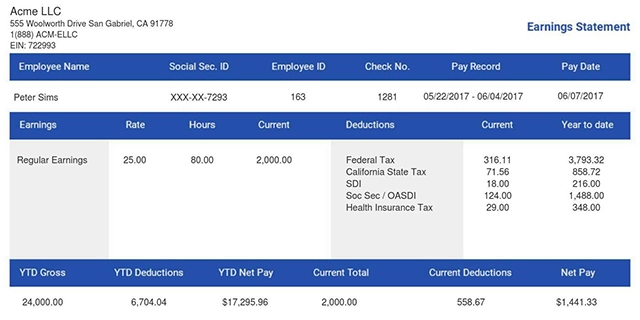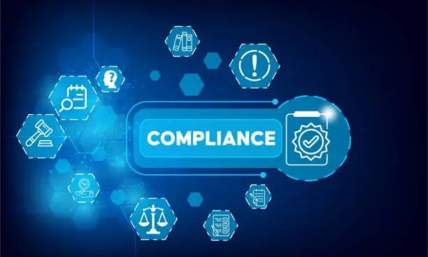The Most Effective Employee Retention Strategies for Keeping Your Best Talent
Your employees are your greatest asset, and when you lose your workers to turnover, the costs are high. How well you retain employees has a ripple effect on your culture, employee engagement, and ultimately all your employees.
If you don't have a formal strategy to improve employee retention, now is the time to put one in place. Companies need to attract and retain top talent to succeed in today's competitive market, and employee retention strategies help increase employee loyalty dramatically.
By 2025, millennials will make up 75% of the workforce. Millennials are also known for changing jobs more frequently than previous generations. They also have high expectations for healthy company environments and on-the-job professional development.
In today's highly mobile work landscape, it's more important than ever to ascertain what qualities employees are looking for in their work to avoid unnecessary turnover. The U.S. Bureau of Labour Statistics reported that annual quits, or turnover, was 13.8% in 2020.
There are many factors that determine whether an employee can be around for a long time or a very short time. Don't let payroll issues be one of those deciding factors on why an employee has decided to leave. With our paystub generator software you can be sure that payroll won't be part of the employee retention issues we will discuss.
It's time to address employee retention in your organization. First, determine your turnover rate and its causes. Then, put together a strategy to strengthen the factors that will ensure good employees stay.
Read on to discover why employee retention strategies are vital and what steps you can take now to boost employee retention.

Why Is It Important to Have an Employee Retention Strategy?
Employee retention has a significant impact on your company's bottom line. In recent years, employee retention and turnover have topped the list of workforce management challenges cited by HR. Here are some of the costs and reasons for employee turnover.
What are the Costs of Employee Turnover?
How much does it cost your company when you lose an employee? The financial toll includes hiring costs, such as interview processes and onboarding training, and loss of productivity resulting from vacant positions.
The average cost per hire is an estimated $4,129. Furthermore, when you lose an employee, the average time to fill an open position is 42 days. Another estimate states that replacing an employee who leaves costs an average of 21% of their annual pay.
Once you hire a replacement employee, you can factor in training costs and lower productivity until the employee is entirely up to speed. Although the financial costs of replacing an employee are significant enough, turnover also impacts current morale.
When colleagues start leaving left and right, employees can ask various questions, such as:
- Is this a healthy environment?
- Is there a leadership problem?
- Are there better options out there?
This lack of security can start a snowball turnover effect.
Remaining employees also have to pick up the slack when a team member leaves, which can cause additional stress and fatigue.
The organization incurs costs even before anyone leaves. For example, when a worker determines they don't have a future within the company and starts counting down the time to leave, productivity suffers and affects employee experience across the entire team.

Why Do Employees Leave?
An analysis of research on employee retention shows numerous factors contribute to employee resignation.
Some of the factors for leaving a job include:
- Lack of developmental opportunities
- Quality of supervision
- Job stress
- Colleague stress
- Compensation
- Appreciation of work done
- Provision of challenging work
- Promotion and development chances
- The attractive atmosphere within the organization
- Relationships with colleagues
- Work-life balance
- Communication
- Supervision
The length of this list may be daunting for employers and HR teams. Although there are many issues to be addressed, there's good news: most of these factors are within your control, and a sound employee retention strategy will positively impact them.

Top Employee Retention Strategies
In this article, we'll cover top employee retention strategies, which include:
Hiring and Onboarding for Employee Retention:
- A thorough interview process
- Effective onboarding for new employees
- Intentional transitions for current employees
Offering Attractive Compensation:
- Competitive salaries
- High-quality benefits
- Bonus pay and incentives
Focusing on Wellness for Employee Retention:
- Self-care programs for employees
- Avoiding employee burnout
Cultivating Healthy Company Culture:
- Healthy leadership styles
- Clear communication
- Alignment with strategic initiatives
Establishing a Healthy Work Environment :
- Solving logistical problems
- Fostering friendship and camaraderie
- Providing flexible schedules and remote work options
Employee Engagement:
- Create an employee engagement program
- Soliciting employee feedback
- Regular employee recognition
Professional Development:
- Internal professional development opportunities
- Ongoing training
- Career path advancement
Also read: Employee Motivation Strategies
Hiring and Onboarding for Employee Retention
The hiring and onboarding of new employees is an important stage in retention. Here’s how to go about it.

A Thorough Interview Process
An effective employee retention strategy starts in the application and interview process. Employee turnover is inevitable unless you ensure your new hires are the right fit for the jobs you hire them for.
Three basic, critical questions to answer in the interviewing process are:
- Is this person a good fit for our organization?
- Will our organizational culture and expectations be a good fit for this individual?
- Do they have the skillset and potential to perform well in this role?
You can avoid many future headaches by ensuring that your new hires complement and add to your company culture, are skilled for the job, and have growth potential.
Look at their resume and consider their longevity record. Has the candidate stayed committed to previous jobs, hobbies, and other activities? That's an indicator of how well they'll commit to the next job.

Effective Onboarding for New Employees
First impressions are everything, and that principle applies when starting a new job. So, HR leaders and managers should develop a smooth, intuitive, and thorough onboarding process. This process helps the new hire avoid frustration and sets them up for success.
In a survey of employee experience, 79% believe onboarding training would accelerate productivity for a new employee.
Ensure your company has a clear communication flow and training protocol for every new hire. At a minimum, the onboarding process should include the following elements:
- Compliance-covering policies and procedures
- Payroll and benefits set up
- Office tours
- Clarifying roles and responsibilities beyond the job description
- Sharing culture
- Connecting new employees to co-workers
Another onboarding element that has been successful for many companies is pairing every new hire with a mentor. Mentors or "buddies" should exemplify company culture and be warm and welcoming in nature.
You also need to be aware of the fact that a lot of companies are onboarding employees remotely. It is essential that you're using the best practices out there when onboarding employees remotely.

Intentional Transitions for Current Employees
Many companies are aware of the importance of hiring and onboarding for new hires, but what about internal transitions? You can’t expect employees to tackle brand new job responsibilities well without adequate support during the transition.
Employees who are transitioning to other departments or promoted need proper support, training, and communication. When the organization fails in these areas, employees can encounter friction with new co-workers or experience a loss of productivity because they don't have clarity about their new role.
Employees expect clarity, and you should include the onboarding process for any new position in your retention strategies.
Offering Attractive Compensation
Compensation is a crucial factor for employees when considering their job prospects. From salary to benefits, employers must stay current on trends and industry standards, which evolve constantly.

Competitive Salaries
Have you researched industry standards for your employee's salaries? HR experts define competitive pay as being 10% above or below the market average for a job.
Geographical location is also a factor when setting salaries. What is the cost of living in your area? Are you offering a sufficient wage to meet those expenses?
A competitive package includes more than an employee's salary. Also, consider how to incorporate additional benefits and bonus perks such as those listed below.
High-Quality Benefits
Quality health coverage is a must for most employees. A competitive benefits package should include medical, dental, and eye coverage with a standard full-time contract. Life insurance packages are another benefit often included in a competitive package.
Retirement plans, such as a 401(k) or a Roth IRA plan, are another enticing benefit. Retirement plans enable employees to set aside part of their pre-tax income and prepare for future needs.
Employees also appreciate paid time off (PTO). Generous PTO for holidays, sick leave, vacations, and personal time can help improve morale, keep workers healthy, and factor into retention.
Many employees appreciate it when you can separate sick leave and PTO so that they can use their PTO for vacations and family life instead of negative and non-rewarding sick days.
Bonuses and Incentives
Bonuses can be tied to work anniversaries, holidays, or performance. If employers promise rewards during the hiring process, they must meet these expectations.
Get creative with your company incentives, especially if you have a limited budget. Smaller items like gift cards, team lunches, or other prizes show appreciation and incentivize employees to put in the extra effort. This incentive also breaks up the monotony of daily work and promotes the fun factor.
Who wouldn't want an all-expense paid vacation? If your company has the budget for reward trips, this tantalizing incentive will motivate your most talented employees and give them memories to last a lifetime.
Don’t settle into a rut when it comes to employees’ salaries, benefits, and incentives. A key element of retention strategies is staying up to date on what the competition offers to top talent.

Wellness Focus for Employee Retention
More employees are expecting a wellness component to their employee benefits program. When employees feel the company cares for their well-being, not just their productivity, it can significantly boost morale and cultivate company loyalty.
Self-Care Programs for Employees
As stated under the reasons for turnover, work-life balance is a crucial factor for why employees leave their job. So how far should employers go to ensure that their team members have a healthy work-life balance?
Although flexible work arrangements can be helpful in some cases, companies should also clarify boundaries and expectations for working outside of regular office hours.
For example, articulate the protocols regarding responding to emails and messages beyond the typical workday and clarify expectations for working overtime.
Employers can also provide wellness benefits to encourage employees to invest in their physical health. Examples include onsite gym facilities or fitness membership and equipment reimbursements.
Also, consider mental health and wellness programming. Company-sponsored counselling and employee assistance programs can address a variety of stressors, substance abuse problems, grief, and issues affecting mental and emotional well-being.

Avoiding Employee Burnout
The World Health Organization defines burnout as an occupational phenomenon that results when workplace stress has not been successfully managed.
Burnout is characterized by:
- Feelings of exhaustion
- Energy depletion
- Increased mental distance from one's job
- Cynicism related to one's job
- Reduced professional efficacy

How big of a problem is occupational burnout? Well, 95% of HR leaders blame employee burnout for the inability to retain staff, and 52% of US office workers say they are stressed at work on a daily basis.
The top reasons for employee burnout include:
- Unfair compensation
- Unreasonable workload
- Too much overtime
- Poor management
- No connection between role and corporate strategy
- Negative culture
- Not enough time off
- Short breaks or lunch breaks
As organizations become more aware of the factors leading to burnout, they can put guardrails to protect their workers. Regular feedback loops encourage open communication and help workers voice concerns before too much damage has occurred.
Cultivating Healthy Company Culture
Harmful and toxic company culture reduces productivity, contributes to employee burnout, and results in high turnover rates. Fostering a healthy company culture is a crucial part of employee retention strategies and company success.
Culture is the tacit social order of an organization. The benefits of positive company culture are numerous, but experts know that employee retention is one of them. So when employees prepare for a job transition, they're looking for a company with an excellent reputation for culture and values.

Healthy Leadership Styles
Healthy company culture starts with senior leadership. The senior management team is responsible for establishing and upholding core values. In addition, leaders should act with integrity in supporting the mission and values, which builds trust on all levels.
A team member’s relationship with their manager is significant. You may have heard the ordinary business saying "People don't leave bad jobs. They leave bad managers." Exit interviews indicate that one of the primary reasons people leave their jobs is dissatisfaction with their manager.
Managers impact their team culture and should take care to foster a healthy environment. Healthy management practices include:
- Staying even-keeled and under control
- Avoiding public criticism of a subordinate
- Speaking positively, avoiding negative and sarcastic comments
- Sharing your personal style of management yet tailoring your approach to individual personalities
- Communicating goals and objectives clearly
- Leading by example
- Showing the utmost integrity
- Rewarding and affirming people for a job well done
- Holding regular one-on-ones

Clear Communication
Can employees rely on clear and consistent internal communication in your organization?
This reliance applies to announcements from senior leadership, policy changes from HR, and interdepartmental communication. Everyone needs to play by the same rules and work toward a common goal.
Competitive environments where departments withhold information from one another can lead to a toxic, secretive, and paranoid culture.
For managers, facilitating regular one-on-one meetings with direct reports paves the way for open communication. Especially among millennials, employees expect the opportunity to provide feedback and have two-way conversations with their managers.
Communication is especially vital when it comes to crisis management. Good communication will help diffuse stress and maintain stability within the organization, whether it's a public relations issue, unexpected transition, or external threat.
Alignment with Strategic Initiatives
What exactly are you working toward? Clarity on key performance indicators (KPIs) and strategic objectives will help workers find success and support the overall goals of your leadership. Employees want to support a greater purpose, so paint a picture of where you’re going.
To summarize the alignment process, here are the steps to take:
- Put your strategic plan on paper in a short, shareable format that’s easy to digest
- Clarify priorities and what is most important to the company right now
- Follow SMART goal-setting criteria: Specific, Measurable, Aligned, Relevant, Time-bound
- Cascade goals to a department, team, and individual level, so everyone understands their contribution
- Check progress regularly, preferably through one-on-one meetings with managers
- Maintain an open feedback loop
With clarity on mission, purpose, and current strategic objectives, motivated employees will be grateful to know that what they’re doing is making a difference.

Establishing a Healthy Work Environment
The environment encompasses the workplace’s practical, concrete logistics, systems, processes, and relational atmosphere. When you remove roadblocks for efficiency and happiness, you’ll regain lost productivity. Employees work better in a comfortable environment.
Solving Logistical Problems
Attention to small details can make a big difference to employees. For example, one study cited a 25% increase in morale and productivity for bringing in larger lunch tables.
Logistical annoyances, however small, can start to weigh heavily on your team over time. Are there aspects of your workplace that are aggravating or tedious? These could include things like:
- Parking logistics
- Bathroom cleanliness
- Office and desk layout
- Lack of supplies
On a more serious note, do workers have all the tools, technology, and resources necessary for completing their jobs with excellence?
In Gallup's State of the Workplace poll, only 3 in 10 employees said they have the materials and equipment they need to do their work right. Not only does this affect productivity and advancement, but it can also contribute to employee stress and burnout.
When employees face logistical challenges day in and day out and feel ill-equipped to fulfil their job expectations, they can be frustrated enough to quit.

Fostering Friendship and Camaraderie
A whopping 70% of employees say that having friends at work is the most crucial element to happy working life. Having a best friend at work contributes even more heavily to employee satisfaction.
Furthermore, 58% of men and 74% of women said they would refuse a higher-paying job if it meant not getting along with co-worker's. So clearly, money isn't everything.
Knowing that friendship has a powerful effect on happiness in the workplace, leadership should ensure there are opportunities for co-worker's to get to know each other personally and develop relationships. Some examples include:
- Team lunches
- Internal networking events
- External team building initiatives
- Encouraging teamwork on projects
- Pairing new team members with veterans

Providing Flexible Schedule and Remote Work Options
When the COVID-19 pandemic forced everyone to work from home, companies and workers alike embraced the flexibility of remote work. For many workers, this flexibility helps them have a healthy work-life balance.
According to a Pew Research Survey, 71% of Americans were working from home all or most of the time during 2020, and more than half indicated they would like to continue working from home after the pandemic ends or quarantine protocol was no longer in place.
Telework is more feasible for adults who have higher educational attainment and income. Some factors that weigh into working from home are access to an internet connection, equipment, and an uninterrupted workplace location.
Flexible schedules can also help employees to balance their family and work obligations. While maintaining appropriate boundaries with colleagues, the flexibility to leave during the workday and makeup time during off-hours can help employees balance their family, health, and other needs outside the office.
Employee Engagement
Employee engagement refers to the employee's level of commitment and connection to an organization. Employee engagement is related to job satisfaction but isn't exactly the same principle.
For organizations to be profitable and progressive, it's not always enough for employees to simply "like" their job. Instead, highly engaged employees perform to their best capabilities and have care and concern for achieving the organization's more significant cause.
There are a number of ways to keep employees engaged in a working environment.

Create an Employee Engagement Program
One of the best ways to understand what truly matters and improve employee engagement is to conduct regular surveys.
Gallup recommends four steps to develop an employee engagement strategy:
- Measure what matters most for employees' performance
- Act quickly in responding to survey results.
- Make feedback and development an ongoing process.
- Empower managers to drive engagement.
The ability to give feedback and feel heard is vital to morale. The feedback loop should be a partnership between both HR and direct managers and supervisors.
Soliciting Employee Feedback
You can't make assumptions about employee morale and job satisfaction; it's crucial to measure it. You can gather feedback from your workforce through individual meetings with managers, HR interviews, and survey tools.
HR can serve as an impartial mediator and safe place for employees to air their concerns. A secure and confidential venue for feedback is essential when workers are experiencing friction with co-worker's or their supervisors.
Sometimes employees simply want to feel heard and validated in their concerns. Regardless, it's essential to follow up these meetings, clarify any actions resulting from that conversation, and set their expectations for change. Even if no change is likely to occur, employees still appreciate clarity and understanding why that may be the case.
Gallup says employees who strongly agree that their organization acts on survey results are 1.9 times more likely to be engaged. Because feedback is only beneficial when employers take action and change is visible, the sophistication, design, and deployment of survey tools are more critical than ever.
Consult a professional or do thorough research on this subject before you roll out a plan. Sending out multiple ineffective surveys could result in "feedback fatigue" from your workforce.

Regular Employee Recognition
According to a Society for Human Resource Management (SHRM) study, 81% of organizations surveyed had an employee recognition program, and 60% tied that program to their core values.
Recognition results are perceived as a better win for HR teams, the organization, and the employees when they're tied to the company's values.
Some benefits of recognition tied to values include:
- Better return on investment
- Instilling and reinforcing corporate values
- Maintaining a strong employer brand
Positive feedback can come from managers or peers. An SHRM report showed that recognition positively affects:
- Employee experience
- Employee relationships
- Organizational culture
- Employee engagement
- The humanity of your workplace
- Organizational values
- Employee happiness
Professional Development
The rapidly changing technology landscape affects all businesses and organizations. As a result, sharpening technical and soft skills are critical for career advancement, and employees are ready to learn.
Employees are willing to learn. 94% of employees say they would stay at a company longer if it invested in their career development.
Also read: 10 Employee Incentive Programs That Will Massively Engage Your Team
Internal Professional Development Opportunities
Professional development opportunities can be job-related or personal. Seminars on individual wellness, establishing a healthy financial plan, or soft skills in the workplace are beneficial for employees.
Whenever your organization rolls out a new process or technology tool, be sure to provide proper training so all employees feel equipped. For rapidly evolving companies, that may feel like a tall task, but requiring training support can help measure the pace of change.

Ongoing Training
Businesses are trying to stay on top of the curve, but technology is rapidly advancing, resulting in skill gaps in many sectors. Ongoing education is critical for both individuals and the company's success.
According to a LinkedIn study, the top 2018 Workplace Learning Trends included:
- Training for soft skills
- Balancing today's urgent needs with tomorrow's future opportunities
- A dependence on online learning solutions
That same study stated that the number one reason employees feel held back from learning is lack of time. Therefore, employers who provide flexible options may accommodate more employees as they pursue skill development.
When it comes to learning, companies should look to provide:
- Opportunities for onsite learning
- Access to digital learning platforms
- Tuition assistance for employee's choice of learning institution
Career Advancement Opportunities
Data from Glassdoor showed that when employees stagnate in their current role, that becomes one of the primary drivers for turnover.
The longer a worker stays in the same position without a title change (and accompanying pay increase), the more likely they will head out and try their luck with another company.
Outline a clear career path for your team members. The plan should include estimated timelines for progression and straightforward steps and achievement measures for promotion to the next level. Increased pay should match additional responsibilities taken on in promotions and title changes.
Leadership development is beneficial at all levels, not just for current managers. As business leaders look for top talent, they will have more options for internal promotion if the company has a well-established development program.
Benefits of Effective Employee Retention Strategies
Voluntary turnover has become a top issue for business leaders and hiring departments. Turnover costs are high and can drain a company financially and in terms of employee morale.
Although compensation is a crucial driver for people moving to a new opportunity, employees are looking for a workplace that provides them with more than competitive pay. Creative packages include competitive salaries and other benefits to incentivize employees.
The quality of the environment and healthy team relationships are also vital to boost employee retention. Employee development and career advancement opportunities will incentivize workers to stay with the company long-term.
Continue to measure turnover rates, gather honest feedback, and focus on an employee retention program to create a workplace that will attract high-quality leaders.















